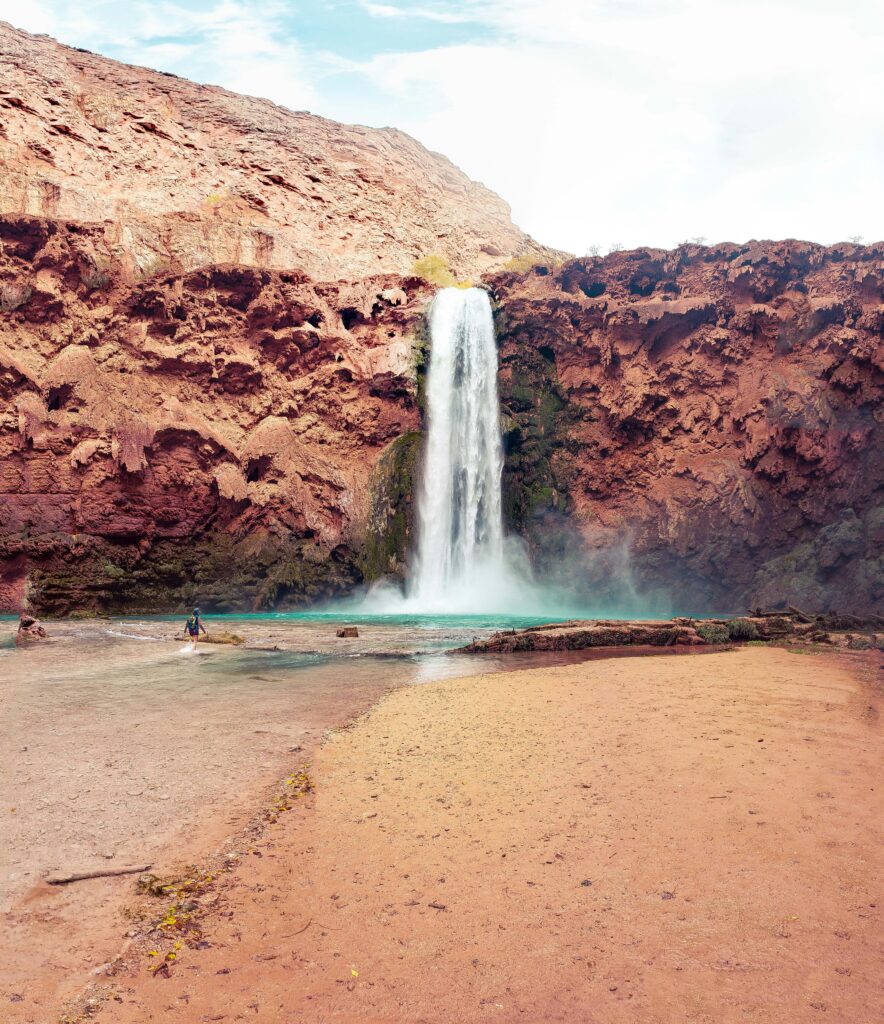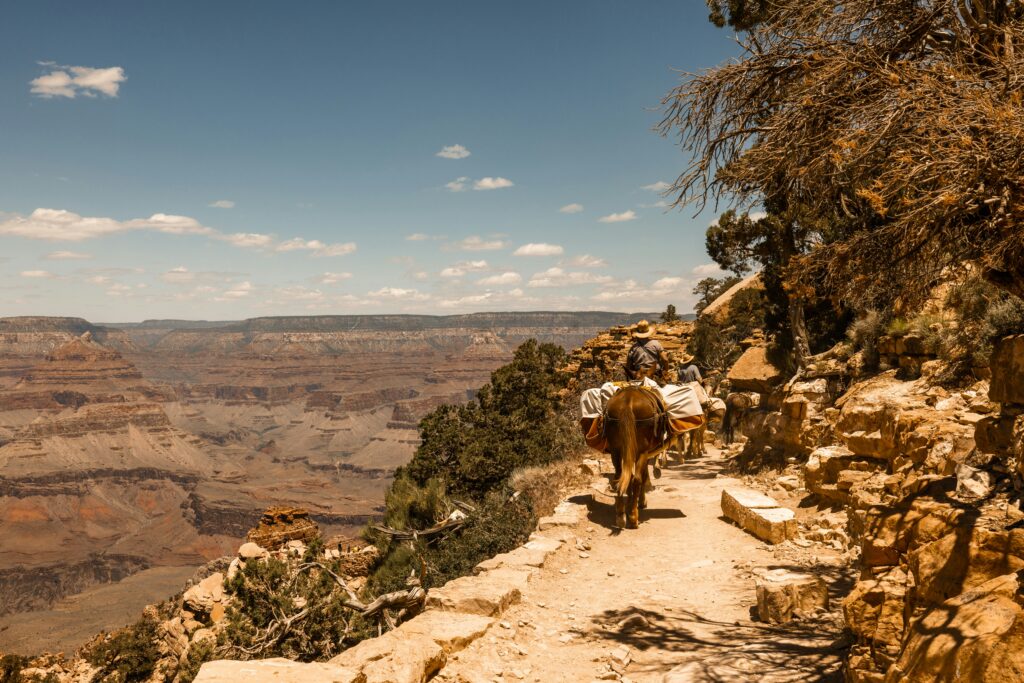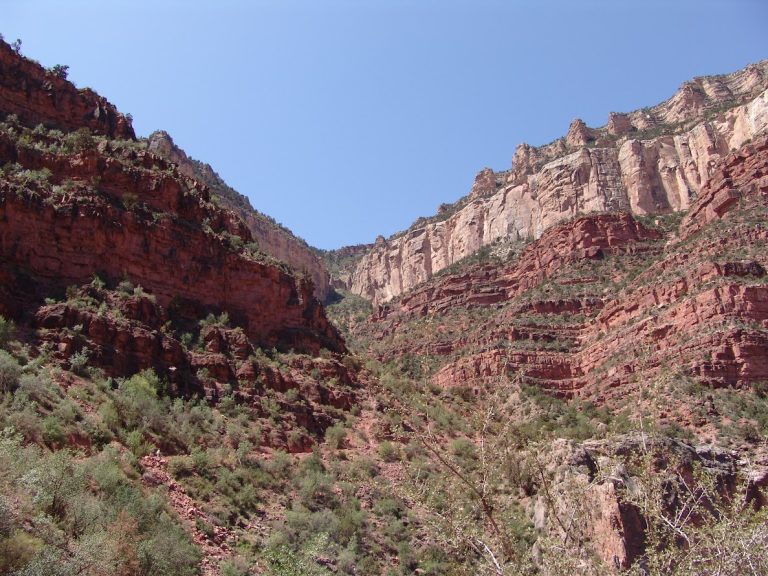In the pre-dawn chill at the South Rim of the Grand Canyon, the world feels quiet, almost reverent. The sun teases the horizon, bathing the canyon walls in hues of gold and crimson, and for a brief moment, the landscape seems infinite. This is the Grand Canyon that most visitors know—an awe-inspiring spectacle seen from its popular overlooks, framed perfectly for photographs and postcards. But the Grand Canyon is much more than what meets the eye from Mather Point or Bright Angel Trail. Beyond these iconic spots lies a world less traveled and infinitely richer—a realm of secluded beauty, cultural resonance, and geological wonder.
For those willing to venture off the beaten path, the canyon transforms. It becomes not just a place to see, but a place to feel, to discover, and to connect. These hidden gems and lesser-known wonders offer an intimate look at the canyon’s quieter, wilder, and often overlooked corners.
The North Rim: A Hidden Sanctuary of Solitude
While the South Rim welcomes over 90% of the canyon’s annual visitors, the North Rim remains a quiet refuge, untouched by the throngs that often overwhelm its southern counterpart. Reaching this side of the canyon requires more effort—it lies over 200 miles from the South Rim by road, and at an elevation exceeding 8,000 feet, it is accessible only between mid-May and mid-October. But those who make the journey are rewarded with a world that feels remarkably different.
The North Rim is cooler and greener, thanks to its altitude and the dense forests of Ponderosa pine, Douglas fir, and quaking aspen that blanket the plateau. The air here is fresh with the scent of pine resin, and the ground is alive with wildflowers in spring and summer. Wildlife is more abundant, too; mule deer graze in meadows, while red-tailed hawks soar over the cliffs. It is a setting that invites contemplation, offering not only vistas but also the space to breathe and reflect.
One of the North Rim’s most accessible viewpoints is Bright Angel Point, a narrow promontory that offers sweeping views of the canyon’s expanse. From this vantage, the layered cliffs and mesas seem to stretch endlessly, a kaleidoscope of ochres, siennas, and rusts that change with the shifting light. For those seeking more adventure, Cape Royal provides panoramic views that include the winding Colorado River far below. As the sun sets, the horizon becomes a canvas of purples and golds, and the quiet is broken only by the soft rustle of wind through the trees.
This side of the canyon is also steeped in history and lore. The Kaibab Plateau, where the North Rim sits, was once home to Indigenous tribes who left behind petroglyphs and traces of their lives. Today, the North Rim offers not just a chance to see the canyon, but to experience it in a way that feels personal and profound—a reminder that some of the most beautiful places are also the quietest.
Havasu Falls: A Desert Eden Like No Other

Tucked away within the Havasupai Indian Reservation, Havasu Falls is a place so breathtakingly beautiful that it feels almost unreal. Here, the canyon’s rugged red cliffs give way to cascades of turquoise water that shimmer under the desert sun. The color, a result of high concentrations of calcium carbonate, is so vivid it seems digitally enhanced, yet it is entirely natural.
Reaching Havasu Falls is a journey in itself. From Hualapai Hilltop, the trailhead for the hike, it is a 10-mile descent into the canyon to the village of Supai. This small, remote community, home to the Havasupai people, is accessible only on foot, by mule, or by helicopter. The hike is strenuous, particularly in the summer heat, but it is also a pilgrimage, offering glimpses of the canyon’s hidden wonders along the way.
As you approach the falls, the sound of rushing water grows louder, building anticipation. When the falls finally come into view, the sight is nothing short of magical. Water tumbles over a 100-foot cliff into a series of emerald pools, surrounded by travertine terraces and lush greenery. Nearby, smaller waterfalls like Mooney Falls and Beaver Falls offer equally stunning scenes, each more secluded than the last.
Camping near the falls allows visitors to experience their beauty at its most serene. At dawn, the water glows softly in the morning light, while at night, the stars stretch across the sky in dazzling clarity. But Havasu Falls is more than a picturesque destination; it is a sacred place deeply connected to the Havasupai people, whose name means “people of the blue-green waters.” Visiting this oasis requires not only effort but also respect for the land and its caretakers.
The South Kaibab Trail: Into the Heart of the Canyon

For those who wish to move beyond the rim and into the canyon’s depths, the South Kaibab Trail offers an unforgettable journey. Unlike other trails, which wind along switchbacks or hug the canyon walls, the South Kaibab follows a ridge, providing unobstructed views at every turn. It is a trail of superlatives—steep, exposed, and demanding—but it rewards hikers with some of the most spectacular scenery in the park.
The trail begins at Yaki Point, descending rapidly into the canyon. Within minutes, hikers reach Ooh-Aah Point, a name that aptly describes the reaction elicited by the view. From there, the trail continues to Cedar Ridge, a flat outcrop that offers a perfect spot to rest and take in the vastness of the landscape. For the adventurous, the trail continues to Skeleton Point, where the Colorado River becomes visible far below, its waters snaking through the canyon like a ribbon of green.
Descending into the canyon is like stepping into another world. The air grows warmer, the vegetation changes, and the sheer scale of the rock formations becomes even more apparent. But the journey comes with challenges. The steep grade means that every step down must eventually be retraced upward, and the heat, particularly in summer, can be intense. Rangers advise carrying plenty of water, snacks, and a healthy respect for the canyon’s ruggedness.
The Grand Canyon West: A Different Perspective

While most visitors focus on the national park, Grand Canyon West, managed by the Hualapai Tribe, offers a distinct and unique experience. Located on tribal land, this area showcases the canyon from a new perspective, blending natural beauty with cultural significance.
The centerpiece of Grand Canyon West is the Skywalk, a glass-bottomed bridge that extends 70 feet out over the canyon edge. Walking on the Skywalk feels like defying gravity, with nothing but glass separating you from the canyon floor 4,000 feet below. It’s a thrill that leaves most visitors equal parts awestruck and exhilarated.
But Grand Canyon West has more to offer than adrenaline-inducing attractions. At Guano Point, visitors can explore the remnants of a historic mining operation while enjoying sweeping views of the canyon. Helicopter tours and rafting trips provide opportunities to see the canyon from angles rarely experienced by most. The Hualapai Tribe also offers cultural demonstrations, sharing their history and connection to this sacred land.
